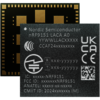DECT NR+ - The first non-cellular 5G standard worldwide
DECT (Digital Enhanced Cordless Telecommunications) was introduced in 1992 and launched a year later. Today, DECT is primarily recognized as a standard for cordless telephony and smart home devices and is overseen by ETSI (European Telecommunications Standards Institute), an independent, non-profit organization dedicated to standardization in the field of information and communication technologies. The frequency is now also becoming attractive for a wide range of applications.
DECT was originally developed for fast roaming between networked base stations. In addition to cordless phones that communicate with a landline base station, heating valves, sockets, or light switches can also establish a wireless connection to certain routers thanks to ULE with HAN-FUN standards based on DECT technology.
Over the years, DECT has evolved with several new variants and new audio codecs. Almost 30 years later, DECT-2020 NR was approved by the International Telecommunication Union (ITU) for the IMT-2020 (= 5G) standard. The new protocol is now called NR+ (New Radio Plus) by the DECT Forum.
Nordic Semiconductor is currently the only supplier on the market that supports the DECT NR+ protocol and already offers its own DECT NR+ compatible modules. The mesh software is provided by the Finnish third-party Wirepas and the audio software is provided by Lynq.
Nordic Semiconductor currently offers three DECT NR+ enabled products in the nRF91 series: nRF9161 SiP, nRF9151 SiP, and nRF9131 mini SiP.
All three modules are equipped with a powerful ARM Cortex-M33 processor that handles the communication protocol and customer application processing, eliminating the need for additional microcontrollers in the end devices. To provide the best possible and most energy-efficient communication for its application, all the modules support LTE-M, NB-IoT, and GNSS positioning in addition to DECT NR+. All three variants are nearly identical in terms of their functionality. However, there are minor differences between the modules do exist: Compared to its predecessor (nRF9161), the nRF9151 has a 20 percent smaller footprint. It also supports an additional power class 5 with 20 dBm output power. In contrast, the nRF9131 is better suited for high-volume cellular IoT applications that require individual certification, which can be more costly for customers. Alternatively, it is specifically designed for DECT NR+ applications, which are license-free and do not rely on cellular networks at all. As a result, the nRF9151 or nRF9161 is more likely to be used for a possible cellular fallback scenario when an NR+ gateway is out of range. And by eliminating the PMIC (power management IC), the nRF9131 is much smaller than the nRF9151.











